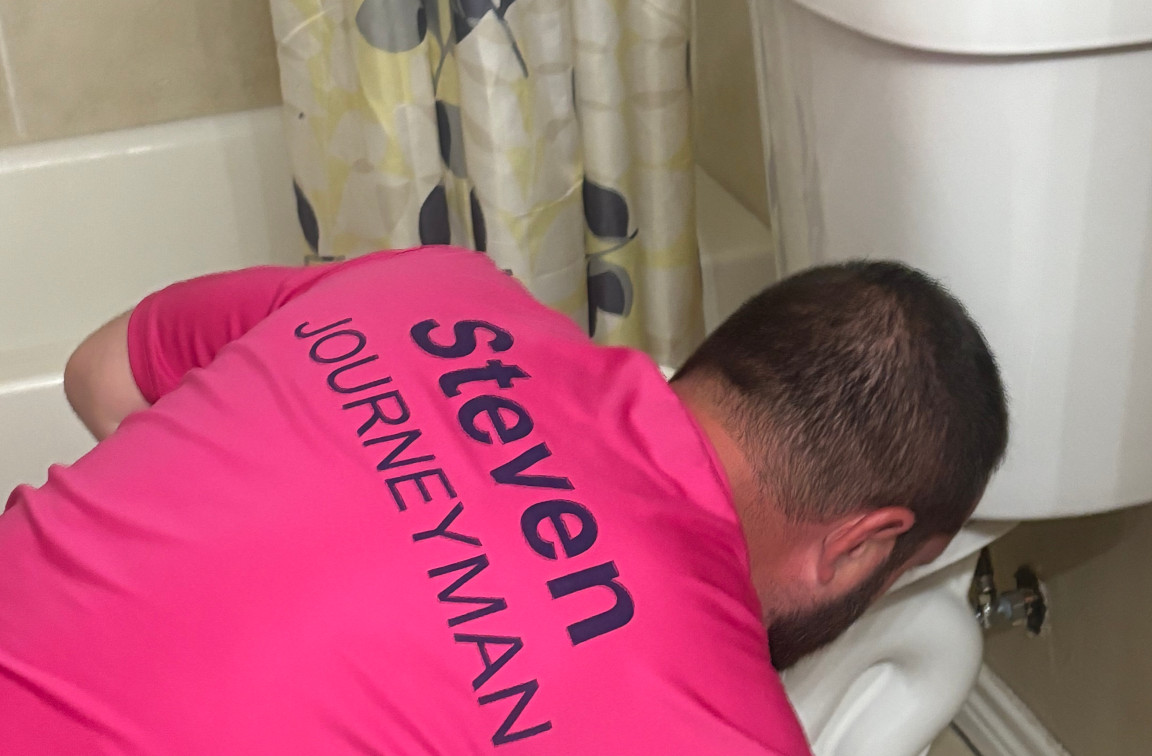Fast Plumbing Answers: How to Turn Off Water to Your House

table of contents
table of contents
Water emergency? Grab the tools from our list below and help to prevent water damage to your house.
Knowing how to turn off your water is essential for any homeowner. Whether you’re dealing with a plumbing emergency, making repairs, or just performing routine maintenance, shutting off the water properly can prevent damage and costly repairs.
At Mother, we’re committed to saving homeowners from costly plumbing repairs by stopping problems before they start. For Dallas residents, that means smart solutions to prevent slab leaks (or quickly fix existing ones).
In this guide, we’ll walk you through the different ways to turn off your water—both inside and outside your home—so you can handle plumbing situations like a pro.
{{slab-leak-repair="/services/slab-leak-repair"}}
How to Turn Off Water at the Meter Box

The meter box is usually the first place to check when you need to shut off the water to your entire home. You can typically find it near the sidewalk or curb in a concrete or plastic box marked "Water."
Tools You May Need
- Meter Key – A specialized tool designed to turn off the main water valve.
- Adjustable Wrench – If you don’t have a meter key, a wrench can often do the job.
- Channel Lock – Another great option if you don’t have a meter key
- Flashlight – If your meter is in a dark area or it's nighttime, a flashlight can help you locate the valve.
Steps to Turn Off Water at the Meter
- Open the meter box lid carefully using a screwdriver or your hands.
- Locate the main shut-off valve—it’s usually a brass or metal handle.
- Turn the valve clockwise (right) until it stops. This fully shuts off the water supply.
- Check your faucets inside the house to confirm that the water has stopped flowing.
If you’re dealing with a major leak or burst pipe, shutting off the water here will prevent further damage.
Find Your Meter Box: How to Turn Off Water at the Street
In some cases, you may need to shut off the water at the street-level supply if your home’s shut-off valve isn’t working properly. This valve is managed by the city’s water department, so you may need to call them for assistance.
To turn off the water at the street:
- Locate the city shut-off valve, which is attached to your water meter in most DFW homes
- If you don’t have a water meter key, grab a tool from our list, or call your local water department—they can shut it off for you.
This is often necessary if your home’s main shut-off valve is stuck or broken.
How to Turn Off Water Inside Your Home

Depending on the leak, and your home’s design you may be able to cut off the water from inside.
Many plumbing fixtures and appliances have individual shut-off valves that allow you to cut water to specific areas without affecting the entire house. Also, newer homes often come with whole-home shutoff valves installed before your water line hits your water meter.
How to Turn Off Water in the Laundry Room
Most washing machines have two shut-off valves—one for hot water and one for cold. To turn off the water:
- Locate the valves behind the washing machine.
- Turn both valves clockwise until they stop.
How to Turn Off Water In the Garage
If your home has a water softener or additional plumbing in the garage, look for shut-off valves near the pipes running along the walls. These can be turned off the same way—by rotating them clockwise.
How to Turn Off Water to the Water Heater
Your water heater has a dedicated shut-off valve on the cold water supply line. This is important to shut off if you’re doing maintenance on the unit or suspect a leak.
To turn off the water heater:
- Find the cold-water supply pipe (usually located at the top of the heater).
- Turn the valve clockwise until it stops.
- If you have a tankless water heater, follow the manufacturer’s instructions for shutting off water to the unit.
{{dfw-water-heater-repair-guide="/blogs/dfw-water-heater-repair-guide"}}
How to Turn Off Water to a Leaking Toilet
Your toilet has a local shut-off valve, which is usually located behind the toilet. Find it either low on your wall, or near the floor.
To turn off water to a leaky toilet:
- When the valve is parallel to your water line, that means it’s on. Turn the valve clockwise until it’s perpendicular to the pipe- that shuts it off. Stop when it’s tight, and listen for the hissing leak sound to stop.
- Flush the toilet once to relieve water pressure and drain water from the bowl.
- The tank should not refill. If it refills, check the valve again to ensure it’s off.
How to Turn Off Water to a Leaking Sink Faucet

Most sinks have two separate shut-off valves- one for the hot water line, and one for cold water. These are located under the sink, inside the cabinet (if one exists).
You should see two flexible supply lines- one hot, one cold. Follow these to the floor or wall- there, you should see a small valve on each line. They will look like knobs or quarter-turn handles, and are generally made from brass or chrome.
To turn off water to a leaky faucet:
- Turn the valves clockwise until they are perpendicular to the supply lines- this indicates they are in the off position.
- Stop turning when you feel solid resistance, then listen for silence- the sound of your leak (hissing or dripping) should stop.
- Turn your hot and cold sink faucets on to drain the lines. Wait until the faucets stop running completely, then turn them back off.
What If Water Is Still Flowing?
If you’ve turned off the water but still see water coming up, the issue could be with the city’s main supply line. In this case, call your local water utility and have them check if the leak is coming from before the meter.
Leaks driving up your water bill? Learn how to mitigate surprise increases in your monthly water bill in our new guide.
{{water-bill-high-for-no-reason="/blogs/water-bill-high-for-no-reason"}}
When Should You Turn Off the Water?
There are several situations when shutting off the water is necessary:
- During Plumbing Repairs – If you’re replacing a fixture, repairing a pipe, or working on a water heater.
- In an Emergency – If a pipe bursts, a major leak occurs, or you have flooding.
- Before Going on Long Vacations – To prevent leaks while you’re away. However, if you have an irrigation system this will leave your plants without anything.
- During Freezing Temperatures – If your area is experiencing a deep freeze, turning off the water can help prevent burst pipes.
Never turn off your water before a freeze.
Dealing with current warning signs of a leak in your home? Rely on our Master Plumbers’ insights to get fast plumbing answers for these issues:
- I hear water running in my walls
- There’s a warm spot on my floor
- There’s a damp crack in my wall
- Water is pooling at my foundation
- There are cracks in my slab foundation
Risks of Turning Off Water to a Home
While shutting off the water is necessary in many situations, there are some risks to keep in mind:
- Pressure Build-Up – If you shut off water for too long, trapped air in the pipes can cause pressure issues.
- Leaks When Turning It Back On – Releasing water too quickly after shutting it off can cause leaks or burst pipes.
- Appliance Resets – Some appliances, like water softeners and tankless heaters, may need to be reset after the water is turned back on.
To avoid issues, always turn the water back on slowly and check for leaks before using your fixtures again.
Call Mother for Leak Repair in Dallas

Knowing how to turn off your water is an essential skill for every homeowner. Whether you need to shut off the water at the meter box, at the street, or inside your home, these steps will help you handle plumbing issues with confidence.
If you ever feel unsure, don’t hesitate to call a professional plumber—we’re here to help!
Live in Dallas? Call us 24/7 to address leak damage caused by high city water pressure, appliance resets and freezing events- we’ll be there at the first available appointment.
{{slab-leak-repair="/services/slab-leak-repair"}}
Common Q’s about Water Leaks and Repairs
What are warning signs of an underground pipe leak?
Here are 10 warning signs of an underground pipe leak:
- Fast-moving water meter.
- Increased water bill.
- Decreased indoor water pressure.
- Wet spots in your lawn.
- Unusually green lawn spaces.
- Flooding around sprinkler heads.
- Cracked pavement or driveway.
- Sewage smell in your yard.
- Foundation cracks.
- Dirt in your indoor water supply.
What are warning signs of a hot water pipe leak?
Here are 6 warning signs of a hot water leak:
- Warm spots on floor.
- Mold and mildew on the floor or walls.
- Cracks in slab foundation or walls.
- Musty odors in floor or walls.
- Ceiling stains.
- Mold or mildew.
What is the top warning sign of a slab leak?
If your water meter moves after you turn off the water supply, you likely have a slab leak. Other notable symptoms include an increase in your water bill, warm or cold spots in your flooring, and the sound of running water with no taps on.
What are warning signs of a toilet leak?
Here are 6 warning signs and symptoms of a leaky toilet:
- Your toilet’s leaking at the base.
- There’s water pooling around the toilet.
- There’s water above the overflow line.
- Your toilet won’t stop running.
- Your toilet’s noisy after flushing.
- Your bowl fills slowly after flushing.




